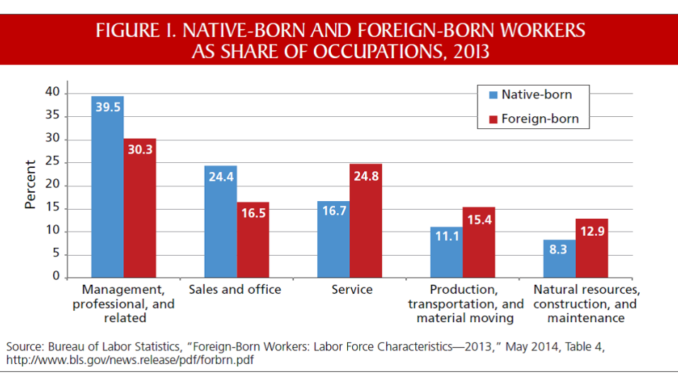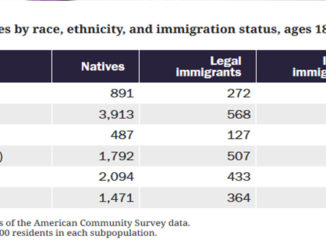
By Diana Furchtgott-Roth, Director, Economics21; Senior Fellow, Manhattan Institute
Executive Summary
The question of how many legal immigrants should be admitted to the United States—and what level of skills these immigrants should have—is among the most divisive issues in the current U.S. domestic policy landscape. Much of the controversy that it sparks can be traced to a single question: Do immigrants help or harm the economy?
Now, with a new Congress likely to take up immigration reform and an administration that has signaled support for a more expansive immigration policy—even to the point of facilitating legal status for current illegal immigrants—the answer to this question is especially vital.
This paper reviews scholarly literature and examines government data on immigration’s contribution to economic growth and finds that both high- and low-skill immigration, on net, boosts economic growth. The paper concludes with a series of pro-growth, long-term policy reforms that Congress would do well to include in immigration reform legislation. (This is not to imply an endorsement of the granting of legal status to nonlegal immigrants by executive action, as pledged by the White House at the time of the release of this report.)
Immigration spurs economic growth in two ways. First, it expands America’s workforce and encourages more business start-ups. Second, because immigrants’ educational backgrounds typically complement, rather than displace, the skills of the native-born labor market, immigration increases economic efficiency by supplying more labor to low- and high-skill markets.
Today, the share of immigrants in the U.S. workforce has declined to below its 1991 peak. H-1B temporary visas for new, skilled immigrant workers fail to meet demand: the current quota, limited at 85,000 annually, represents just over one-twentieth of 1 percent of the U.S. labor force. Acquiring permanent residency (a “green card”) is a lengthy, costly process. When immigrant talent, such as the 51 percent of foreign-born engineering doctorate earners and 44 percent of foreign-born physics doctorate earners,[1] are forced to leave the country, private and taxpayer investment in research loses value.
Such harmful consequences are the result of opposition to more open immigration. And while some arguments against more immigration are rooted in preserving American cultural norms, others are based on economics. Failure to fully account for the economic benefits of immigration, which, on net—as this paper documents—outweigh its costs, is responsible for many of the specious economic arguments espoused by immigration’s critics.
Legislation is needed to expand the number of visas for both low- and high-skill immigrants and to begin to resolve the status of the estimated 11 million illegal workers living in the United States. Labor markets change constantly; U.S. immigration policy should emulate this flexibility. Above all, the data are clear: more flexible immigration policies spur growth and would benefit all Americans, native- and foreign-born alike.
About the Author
Diana Furchtgott-Roth, former chief economist of the U.S. Department of Labor, is director of Economics21 and senior fellow at the Manhattan Institute for Policy Research. She is a contributing editor of RealClearMarkets.com, and a columnist for the Washington Examiner, MarketWatch.com, and Tax Notes. From 2003 to 2005, Ms. Furchtgott-Roth was chief economist of the U.S. Department of Labor. From 2001 to 2002 she served as chief of staff of President George W. Bush’s Council of Economic Advisers. Ms. Furchtgott-Roth served as deputy executive director of the Domestic Policy Council and associate director of the Office of Policy Planning in the White House under President George H.W. Bush from 1991 to 1993, and she was an economist on the staff of President Reagan’s Council of Economic Advisers from 1986 to 1987.
Does Immigration Increase Economic Growth? by Latinos Ready To Vote


